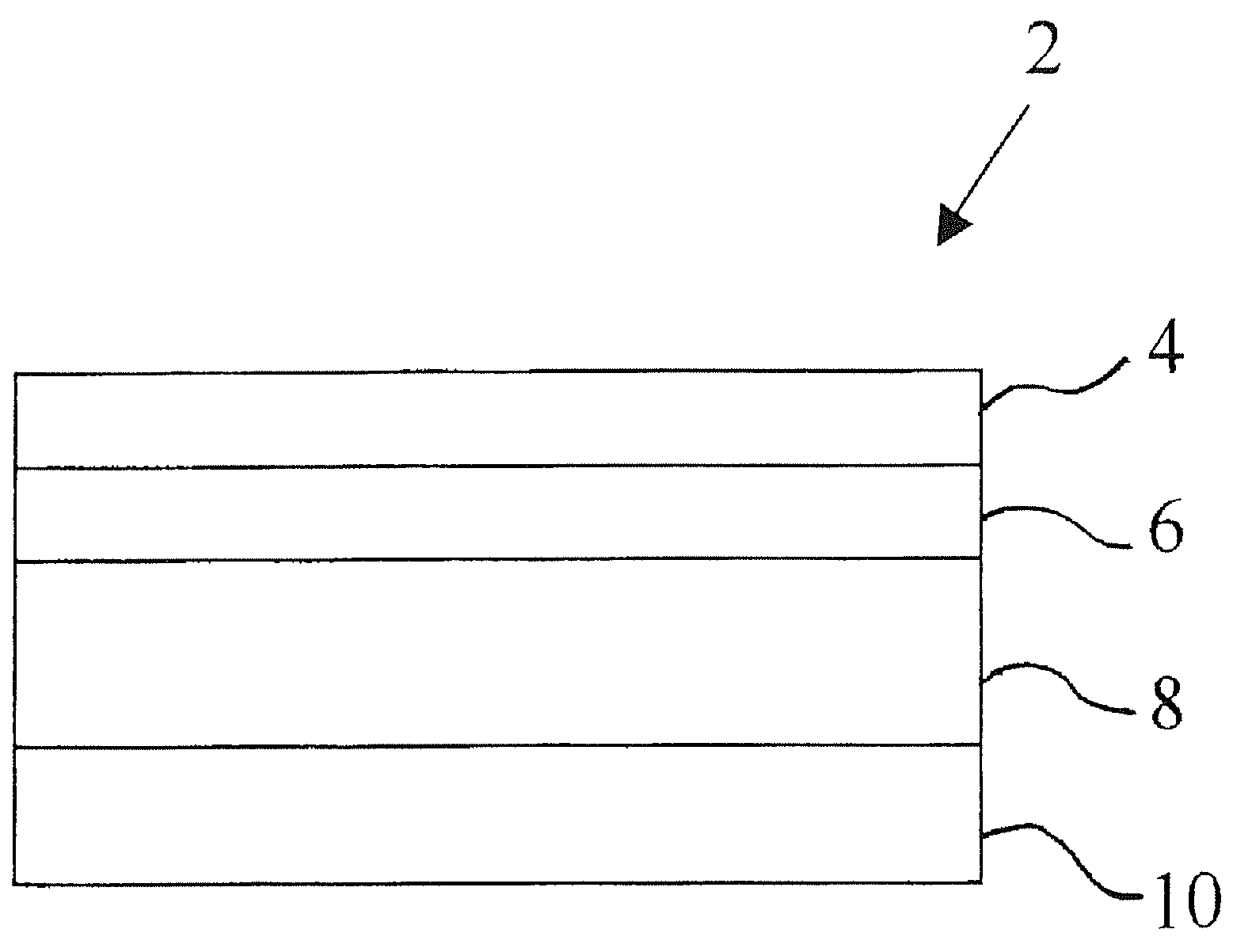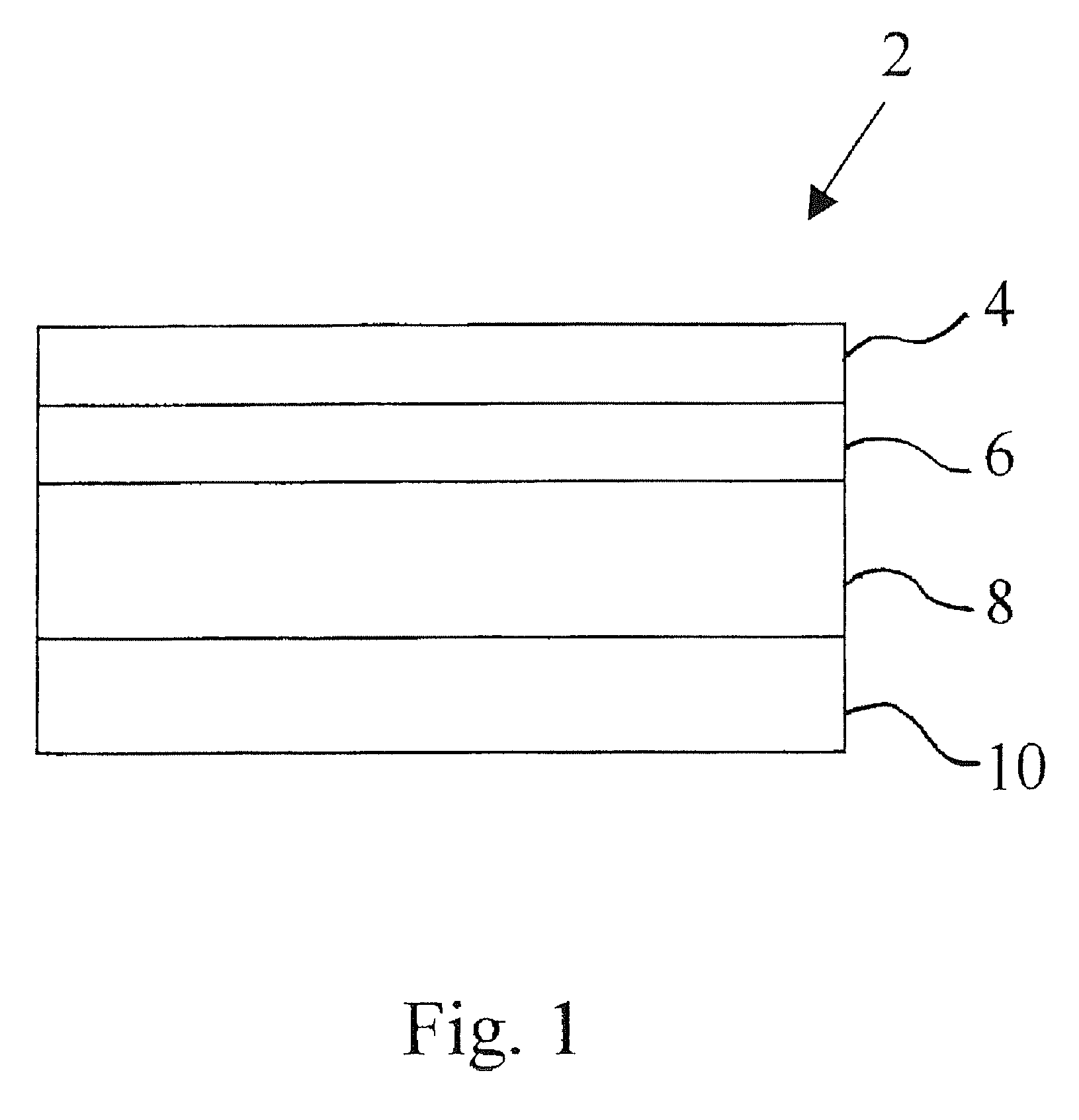Multilayer braze-able sheet
a multi-layer brazing and sheet technology, applied in the direction of solventing apparatus, manufacturing tools, other domestic objects, etc., can solve the problems of poor post-brazing performance, poor post-brazing strength, and poor post-brazing strength, so as to reduce aging time, improve post-brazing strength, and maintain corrosion resistance
- Summary
- Abstract
- Description
- Claims
- Application Information
AI Technical Summary
Benefits of technology
Problems solved by technology
Method used
Image
Examples
example 1
[0039]Table 1 below shows compositions of components, namely core layers, interliners and sacrificial layers, from which 4-layer composite tubestock brazing sheets were fabricated. The components were fabricated in accordance with the invention, with the exception of interliner designated AIL1, which had low copper.
[0040]
TABLE 1Desig-ComponentnationSiFeCuMnMgTiZnCoreAC10.920.180.781.20.560.150AC20.890.180.911.530.590.150KC10.830.841.610.380.140InterlinerAIL10.760.20.221.1900.160AIL20.790.190.521.5600.160KIL30.870.841.5700.140KIL41.010.941.600.130SacrificialAS10.810.1801.000.0034.05AS20.820.180.011.2100.0094.06KS30.870.984.54KS40.991.24.98
[0041]As shown in Table 2, brazing sheet composites were fabricated from the above components. Composites A, B and C were fabricated at 200 micron thickness. Composite D, which did not conform to the present invention because of the low Cu content of component AIL1, was fabricated at 150 micron thickness. The difference in thickness of composite D r...
PUM
| Property | Measurement | Unit |
|---|---|---|
| thickness | aaaaa | aaaaa |
| thickness | aaaaa | aaaaa |
| ultimate tensile strength | aaaaa | aaaaa |
Abstract
Description
Claims
Application Information
 Login to View More
Login to View More - R&D
- Intellectual Property
- Life Sciences
- Materials
- Tech Scout
- Unparalleled Data Quality
- Higher Quality Content
- 60% Fewer Hallucinations
Browse by: Latest US Patents, China's latest patents, Technical Efficacy Thesaurus, Application Domain, Technology Topic, Popular Technical Reports.
© 2025 PatSnap. All rights reserved.Legal|Privacy policy|Modern Slavery Act Transparency Statement|Sitemap|About US| Contact US: help@patsnap.com


